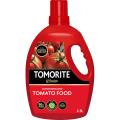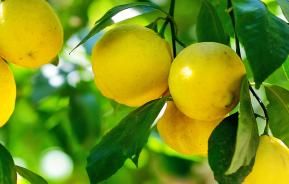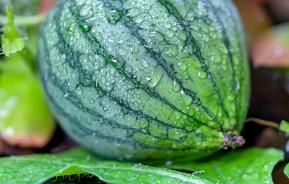Members of the citrus family – oranges, lemons, limes, grapefruits and so on – are prized for their flavoursome fruits and vitamin C content. In fact, though, they contain no more vitamin C than most other plants, but this notion has stuck around since Georgian times when they were used at sea to ward-off scurvy.
When you think of citrus fruit, oranges and lemons immediately spring to mind. But it’s possible to grow much more than this in the UK. Clementines, mandarins, satsumas, grapefruits, kumquats and limes, as well as bergamot – so you can make your own Earl Grey tea – all do well over here.
Something in common
All citrus plants can be easily grown in the UK as long as you make sure you provide a frost-free environment in the winter months. Cold, wind and rain combine to make these plants miserable, meaning they need to be brought inside in the autumn. They are tolerant of cold down to around 5'c, so an unheated polytunnel is the best. Try to keep them in the sunniest places, not necessarily for the heat it brings but because they’ll prefer it.
Just because it’s winter doesn’t mean that citrus plants are going to ‘sleep’. In fact, they actively grow during this period, and most of them flower in the winter too. An orange in flower on Christmas day is a lovely thing!
Clearly, if they’re to be brought in during the winter, these plants need to be grown in pots. For preference, a large terracotta pot is best because it’s porous and provides an amount of air to the roots. In addition it will more readily allow for the evaporation of water, plus store heat for much longer than a plastic equivalent. As far as size is concerned, a 60cm pot for a small citrus tree will be perfectly adequate.
Fill it with a soil-based compost (John Innes No.2) and incorporate some sand into the mix, say up to 25%. All citrus plants generally need the same regime when it comes to watering and feeding. They don’t like to stand in wet conditions, but do enjoy moisture. However, take care not to over-water; simply make sure the soil is slightly moist, and that the pots are positively free-draining.
Use a good quality general fertiliser (making certain that it has all the necessary trace elements), at least once a month – possibly once a fortnight in the spring. Some people use winter-feed and a separate summer feed. But, as long as you use a good quality, all-round fertiliser, this expense isn’t necessary in my view. Feed less in the winter, just once a month or so.
Re-potting and pruning
This is best done in the spring. Trim your plant just above a fat, lush-looking bud, so the tree takes on a good, roundish shape and remains at the appropriate height for your tunnel.
Re-pot yearly into the next size pot. Take the opportunity to add some slow-release fertiliser and fresh, well-draining compost. Gently remove some of the soil and ensure there is plenty of crockery in the bottom of the new pot for drainage. Add new compost/sand mixture and firm well in. Give a good watering, and keep the plant out of draughts/wind for a few days.
Pests and problems
All citrus suffer from the same group of pests; aphids, red spider mite and scale insects. A weekly wash with soft soap will keep most of these in check. They drop their leaves regularly in the winter, but should not lose more than a third. Any evidence of yellowing leaves could be due to over-watering, lack of nutrients, low temperatures or insufficient sunlight.
Keep plants well ventilated but out of strong draughts to avoid botrytis and other fungal infections.
Above all, water well but don’t allow them to stand in water.
Oranges
Every navel orange is a descendant of a single mutant tree found in the early nineteenth century in Brazil. It was budded and the small plants sent around the world. They’re very heavy fruit and, consequently, the trees need to be large to take their weight. The fruits are seedless and have a small ‘baby’ fruit inside them.
Blanco oranges are smaller and so can be borne on smaller trees. Most fruits can be harvested from November to December.
Grapefruit
Grapefruit first appeared in the West Indies – another mutation – in 1750, and were transported as buds all around the world. They were particularly prized by rich English landowners who grew them in hot houses, even though they can be dragged outside in the summer. The plants are larger than oranges, and bear larger fruits. Otherwise they can be treated in exactly the same way.
Kumquats
This is a fast-growing tree and the fruits can be eaten whole. They are also supposed to be good pickled in brandy. They grow to be quite large and, for this reason, are kept in a single position.
Clementines and Satsumas
These plants ripen around Christmas, most being ready after November. They can be kept quite small, even though they are vigorous plants. Annual trimming keeps them in check, but you can grow them up a wall or as a large bush.
Limes and limequats
Limes tend to be easy to grow and can be restricted to a reasonably small tree of about 1.7m high. There are a number of varieties and each grows well in the UK – some turning yellow when ripening. A limequat is a cross between a lime and a kumquat. You can eat the whole fruit, and it tastes like a lime.
Citrus savvy!
Whichever citrus plant you want to grow, they’re easy as long as you follow the rules:
- Keep plants cool but frost-free in winter – minimum 5 degrees C
- Water freely, but ensure good, free-draining
- Feed regularly in the summer, not in winter
- Prune and re-pot in spring
- Keep the atmosphere humid by watering paths and, if kept inside year-round, ensure good ventilation during hot weather








